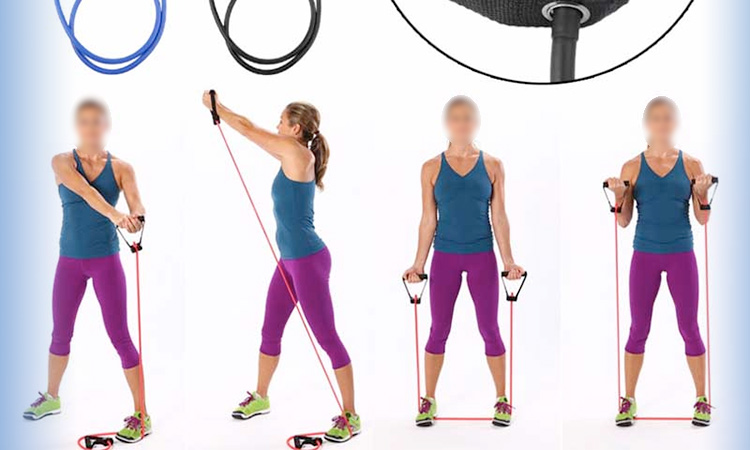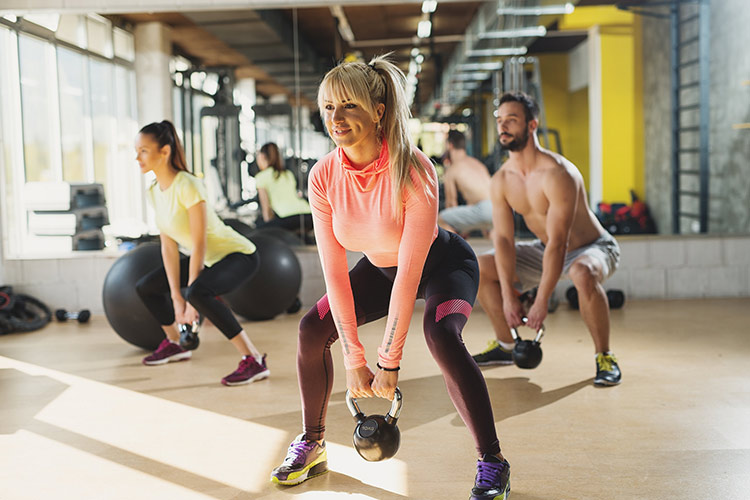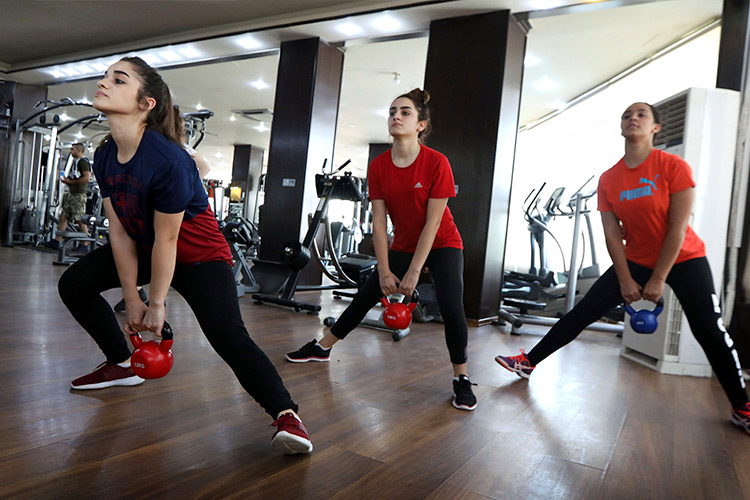
Photo used for illustrative purpose.
Strength training comes in different ways. Commonly we see weight machines or dumbells in the gym. If you want to continue your workout anywhere, portability is very important. Resistance bands is the best tool for you. Being safe and inexpensive, it is undeniably very famous both in the fitness and rehabilitation setting.
What is a resistance band?
It’s an elastic band commonly used for strength training and muscular rehabilitation. They are typically made from latex or synthetic rubber and come in various resistance levels and shapes (flat bands, loops, tubes, etc.).
What colour resistance band should I use?
Resistance bands have a colour-coded resistance system. This makes it easy to find your perfect fit and ensures you get the same level of resistance every time. You can even double up the bands or use two pieces that are the same length to increase the resistance.
Standing Chest Fly
Place two cable pulleys slightly above the shoulder height with handle attachments, grip one handle in each hand and step forward so that the arms are outstretched to the sides. With the elbows slightly bent, slowly bring both hands together in front of the body. When the hands are together, pause for one second before slowly returning the arms to the starting position.
Standing Single Leg Cable Rotation
Step 1
Stand sideways to a cable / band with your feet positioned together. Hold the cable / band handle relatively close to your body slightly below chest height, positioning your hands at the midline of your body (not illustrated). Contract your abdominal / core muscles to stiffen your torso, holding it vertical to the floor. Depress and retract your scapulae (pull your shoulder down and back) without arching your low back.
Step 2
Starting Position: Slowly lift your inside leg off the floor, shifting your weight onto your outside leg while maintaining your body vertical to the floor (avoid any leaning).
Step 3
Movement: Exhale and slowly rotate your torso away from the cable / band anchor, keeping your upper arms at your sides, elbows bent and hands positioned at the midline of your body. Your head, chest and torso should all move together and avoid leaning your torso in the direction of your movement. Attempt to stabilise your lower extremity (foot, knee and hips), minimizing movement in this region as your torso rotates. Hold this end position briefly before rotating in the opposite direction (if possible) or returning to your starting position. Turn to face the opposite way and repeat this movement in the opposite direction.
Step 4
Exercise Variation: To increase exercise intensity, repeat the same exercise, but fully extend your arms to shoulder height and keep your arms in this position throughout the exercise. This creates a longer lever and increases the loading on the spine, requiring the core muscles to work harder.
Engage your abdominal / core muscles throughout this exercise to stabilise and protect your spine. This single-leg torso rotation over the stance (supporting) leg, mimics part of our walking pattern and helps develop stability in the knee if performed correctly. Try to avoid twisting or moving your foot or knee during this rotation.
Triceps Pressdown
Stand with the feet hip-width apart, the hips straight, the back tall, and the knees slightly bent. Place the cable pulley at the highest position, use a straight bar attachment, and grip the bar firmly in both hands. Pull the elbows in close to the sides and slowly push the hands down towards the floor. Straighten the arms completely before bending the elbows to return to the starting position.
Walking Abduction
With a resistance band under both feet, cross the hands and grasp each handle at the hips. Step to the side keeping both legs straight and the trunk strong and stable.
Squat to Row
Stand with the feet hip-width apart, the hips straight, the back tall, and the knees slightly bent. Place the pulley at about waist-height, attach an attachment with two grips, hold a grip in each hand so that the thumbs are pointed up to the ceiling and the palms are facing each other. Lift the chest, hold the arms straight in front of the body, and push the hips back to begin lowering into a squat. At the bottom of the squat keep the arms straight and the back straight while pushing the feet into the ground to stand up.
While standing up from the squat, pull the rope towards the body keeping the arms parallel to the floor and the elbows close to the sides; the hands should reach the front of the stomach. Pause and slowly straighten the arms, and drop down into the next squat (pull the arms towards the body while standing, and allow the arms to slowly straighten while lowering into the squat).








